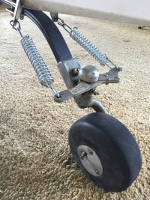 Reduced cowl openings Previously 55in², now 36 in² (107 KB) |
 Top of climb at 17,000' GW=1509# Climb power = full throttle (15.0") 2500 RPM (138 KB) |
 Cruise at 17,000' IAS 107 K, TAS 144 K FF= 6.2 GPH, OAT= -2.7°C DA=18,900' (136 KB) |
 Cruise at 7,000' IAS 145 K, TAS 166 K FF= 8.8 GPH, OAT= +17.6°C 2400 RPM, DA=8,900' (Above optimum Density Altitude) (133 KB) |



